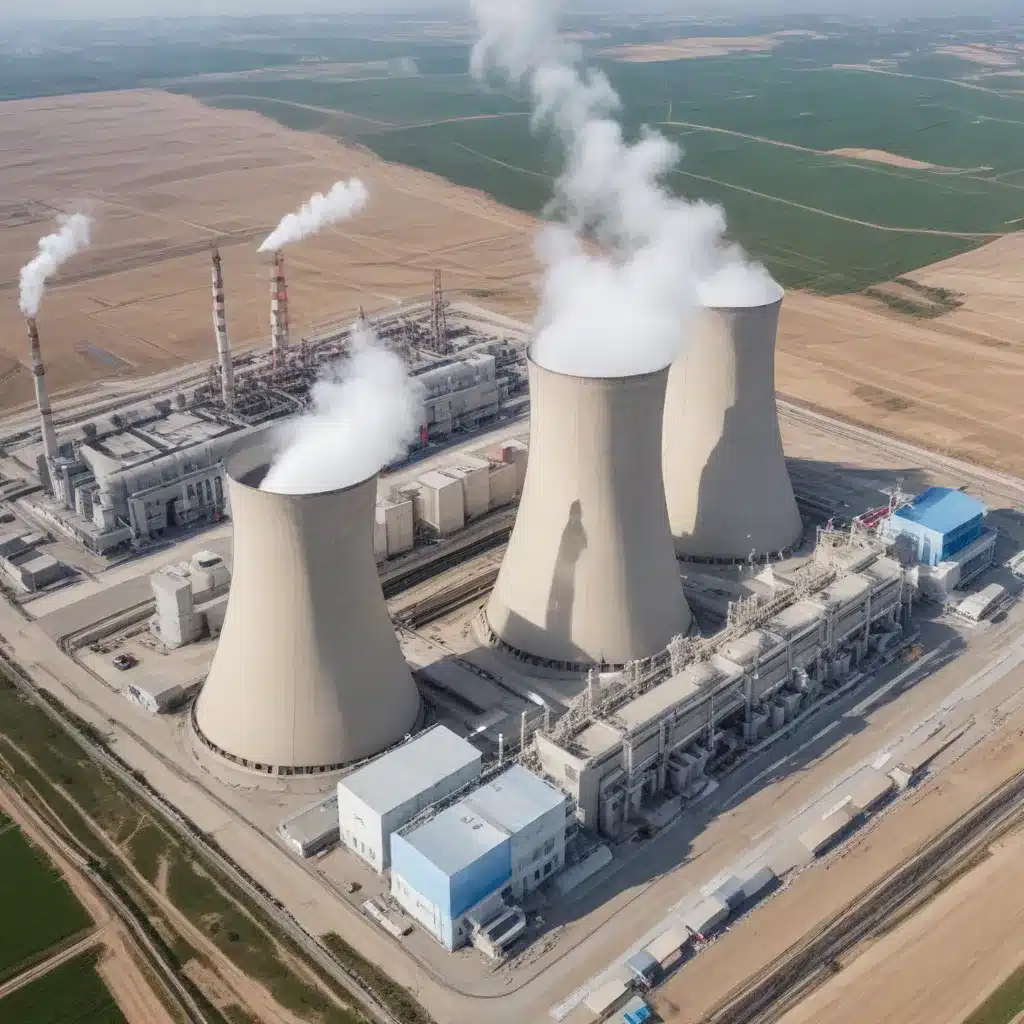
Shandong Chenming Mill Power Station – Examining Global Energy Assets
As an experienced home improvement consultant, I’m excited to explore the fascinating world of industrial energy assets, with a particular focus on the Shandong Chenming Mill Power Station. This comprehensive analysis will delve into the mill’s energy footprint, examine the global landscape of energy assets, and uncover strategies for optimizing operational efficiency and sustainability.
Shandong Chenming Mill Overview
Situated in the heart of China’s Shandong Province, the Shandong Chenming Mill is a sprawling industrial complex that specializes in the production of pulp, paper, and other cellulose-based products. With a long history dating back to the 1970s, this state-of-the-art facility has evolved to become a significant player in the global paper and packaging industry.
The mill’s geographical location, nestled along the coast of the Yellow Sea, provides strategic advantage in terms of logistics and access to essential raw materials. Its production capacity is truly impressive, with the ability to manufacture an annual output of over 6 million tons of various paper grades, including printing and writing paper, tissue paper, and specialty papers.
Energy Assets of Shandong Chenming Mill
The Shandong Chenming Mill’s energy assets are a crucial component of its overall operations, powering the myriad of industrial processes that transform raw materials into final products. Let’s delve deeper into the mill’s energy generation and thermal energy production capabilities.
Electricity Generation: The mill operates its own captive power station, known as the Shandong Chenming Mill Power Station. This facility utilizes a combination of coal-fired and natural gas-fired turbines to generate the vast amounts of electricity required to run the mill’s machinery, lighting, and other essential systems. With a total installed capacity of over 1,200 megawatts (MW), the power station is capable of meeting the mill’s substantial energy demands and even supplying surplus electricity to the local grid.
Thermal Energy Production: In addition to electricity generation, the Shandong Chenming Mill Power Station also produces significant amounts of thermal energy in the form of steam and hot water. These thermal resources are crucial for powering the mill’s various industrial processes, such as pulp drying, paper machine operations, and building heating. The power station’s cogeneration capabilities, wherein it simultaneously generates both electricity and useful thermal energy, contribute to its overall energy efficiency and sustainability.
Global Energy Asset Landscape
To fully understand the role and significance of the Shandong Chenming Mill Power Station, it’s essential to examine the broader global energy asset landscape. This wider perspective sheds light on the evolving trends, challenges, and opportunities that shape the energy sector.
International Energy Landscape
The global energy landscape is a dynamic and complex tapestry, with both emerging and developed economies playing crucial roles. In emerging markets, the demand for energy is often driven by rapid industrialization, urbanization, and economic growth, leading to the development of new energy assets to meet these expanding needs. Conversely, in developed economies, the focus has shifted towards renewable energy integration, energy efficiency, and emissions reduction as these nations strive to transition towards more sustainable energy systems.
Energy Asset Diversification
Across the globe, energy asset owners and operators are recognizing the importance of diversifying their portfolios to enhance resilience, adaptability, and long-term sustainability. This diversification often involves a balanced approach, integrating both renewable energy sources, such as solar, wind, and hydropower, alongside more traditional fossil fuel-based assets, like the Shandong Chenming Mill Power Station’s coal-fired and natural gas-fired facilities.
Environmental Considerations
As the world grapples with the pressing challenges of climate change and environmental sustainability, the energy sector has come under increasing scrutiny. The Shandong Chenming Mill Power Station, as a significant energy asset, must address these concerns and implement strategies to minimize its environmental impact.
Emissions and Sustainability
The Shandong Chenming Mill Power Station, with its reliance on coal and natural gas, faces the critical challenge of managing its carbon footprint and greenhouse gas emissions. Compliance with increasingly stringent environmental regulations, both at the national and international levels, has become a top priority for the mill’s energy asset management team.
Resource Efficiency
In addition to emissions reduction, the Shandong Chenming Mill Power Station must also focus on improving its resource efficiency, particularly in terms of energy utilization and waste management. Implementing energy efficiency measures, such as advanced combustion technologies, waste heat recovery systems, and process optimization, can significantly enhance the power station’s operational performance and reduce its overall environmental impact.
Operational Optimization
As the global energy landscape evolves, the Shandong Chenming Mill Power Station must continuously optimize its operations to maintain a competitive edge, ensure long-term viability, and contribute to the wider sustainability efforts of the energy sector.
Asset Performance Management
Effective asset performance management is crucial for the Shandong Chenming Mill Power Station. This involves implementing robust maintenance strategies, leveraging predictive analytics, and adopting emerging technologies, such as Internet of Things (IoT) and artificial intelligence (AI)-powered systems, to monitor, optimize, and extend the lifespan of its critical energy assets.
Energy Supply Chain Optimization
Beyond asset-level optimization, the Shandong Chenming Mill Power Station must also focus on optimizing its energy supply chain, encompassing the logistics, distribution, and integration of its energy resources. By adopting a more holistic, systems-based approach, the mill can enhance the efficiency and resilience of its energy supply, ultimately reducing costs and minimizing environmental impact.
In conclusion, the Shandong Chenming Mill Power Station represents a significant energy asset within the global landscape, with its multifaceted capabilities in electricity generation and thermal energy production. As the energy sector continues to evolve, the mill must navigate the complex challenges of emissions reduction, resource efficiency, and operational optimization to ensure its long-term sustainability and competitiveness. By embracing innovative technologies, implementing robust management strategies, and aligning with broader environmental imperatives, the Shandong Chenming Mill Power Station can serve as a model for the energy industry’s ongoing transformation.
For more insights into the world of industrial energy assets and their impact on global sustainability, I encourage you to explore the resources available at Reluctant Renovator.



